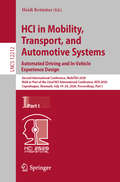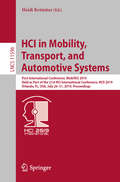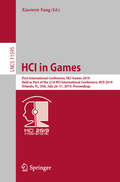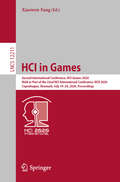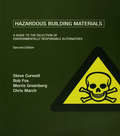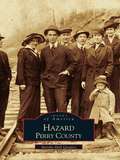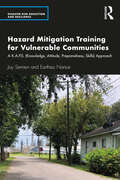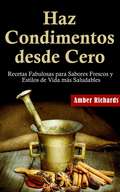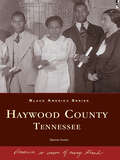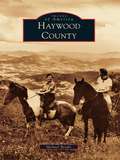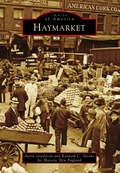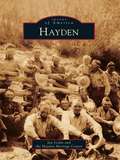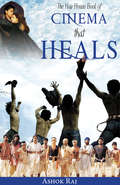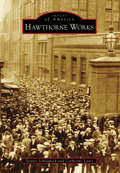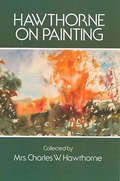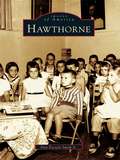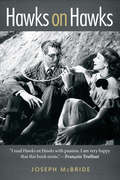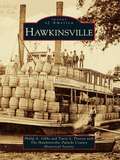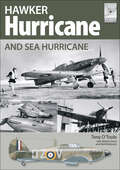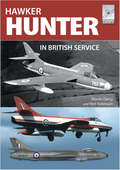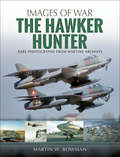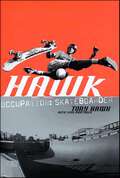- Table View
- List View
HCI in Mobility, Transport, and Automotive Systems. Automated Driving and In-Vehicle Experience Design: Second International Conference, MobiTAS 2020, Held as Part of the 22nd HCI International Conference, HCII 2020, Copenhagen, Denmark, July 19–24, 2020, Proceedings, Part I (Lecture Notes in Computer Science #12212)
by Heidi KrömkerThis two-volume set LNCS 12212 and 12213 constitutes the refereed proceedings of the Second International Conference on HCI in Mobility, Transport, and Automotive Systems, MobiTAS 2020, held as part of the 22nd International Conference on Human-Computer Interaction, HCII 2020, in Copenhagen, Denmark, in July, 2020.* A total of 1439 full papers and 238 posters have been carefully reviewed and accepted for publication in HCII 2020. The papers cover the entire field of human-computer interaction, addressing major advances in knowledge and effective use of computers in a variety of application areas. MobiTAS 2020 includes a total of 59 papers and they are organized in the following topical sections: Part I, Automated Driving and In-Vehicle Experience Design: UX topics in automated driving, and designing in-vehicle experiences.Part II, Driving Behavior, Urban and Smart Mobility: studies on driving behavior, and urban and smart mobility. *The conference was held virtually due to the COVID-19 pandemic.
HCI in Mobility, Transport, and Automotive Systems: First International Conference, MobiTAS 2019, Held as Part of the 21st HCI International Conference, HCII 2019, Orlando, FL, USA, July 26-31, 2019, Proceedings (Lecture Notes in Computer Science #11596)
by Heidi KrömkerThis book constitutes the refereed proceedings of the First International Conference on HCI in Mobility, Transport, and Automotive Systems, MobiTAS 2019, held as part of the 21st International Conference on Human-Computer Interaction, HCII 2019, in Orlando, FL, USA in July, 2019. The 1274 full papers and 209 posters presented at the HCII 2019 conferences were carefully reviewed and selected from 5029 submissions. The papers cover the entire field of human-computer interaction, addressing major advances in knowledge and effective use of computers in a variety of application areas. The papers in this volume are organized in the following topical sections: interaction in autonomous and semiautonomous vehicles; driving experience; and mobility and transport.
HCI in Games: First International Conference, HCI-Games 2019, Held as Part of the 21st HCI International Conference, HCII 2019, Orlando, FL, USA, July 26–31, 2019, Proceedings (Lecture Notes in Computer Science #11595)
by Xiaowen FangThis book constitutes the refereed proceedings of the First International Conference on HCI in Games, HCI-Games 2019, held in July 2019 as part of HCI International 2019 in Orlando, FL, USA. HCII 2019 received a total of 5029 submissions, of which 1275 papers and 209 posters were accepted for publication after a careful reviewing process. The 34 papers presented in this volume are organized in topical sections named: Game Design; Gaming Experience; Serious Games; and Gamification.
HCI in Games: Second International Conference, HCI-Games 2020, Held as Part of the 22nd HCI International Conference, HCII 2020, Copenhagen, Denmark, July 19–24, 2020, Proceedings (Lecture Notes in Computer Science #12211)
by Xiaowen FangThis book constitutes the refereed proceedings of the Second International Conference on HCI in Games, HCI-Games 2020, held in July 2020 as part of HCI International 2020 in Copenhagen, Denmark.* HCII 2020 received a total of 6326 submissions, of which 1439 papers and 238 posters were accepted for publication after a careful reviewing process. The 38 papers presented in this volume are organized in topical sections named: designing games and gamified interactions; user engagement and game impact; and serious games. *The conference was held virtually due to the COVID-19 pandemic.
Hazardous Building Materials: A Guide to the Selection of Environmentally Responsible Alternatives
by Bob Fox Chris March Steve Curwell Morris GreenbergThis new edition provides a detailed reference source of the use in residential buildings of materials known or suspected to harm health and the environment. Alternative materials are evaluated using unique data sheets which compare environmental impact, cost, health, safety and technical performance providing building and construction professionals and other practitioners with the facts they need to make the right selection.Hazardous Building Materials considers the following building elements: structure, windows and doors, roofing, insulation, finishes and fittings, pipes, services and services equipment. Based on the highly successful format of the first edition this practical reference provides expert advice with the use of clear drawings, tables and data sheets to architects, surveyors, facilities managers, students on built environment courses, material suppliers, environmentalists and clients.
Hazard, Perry County
by Martha Hall QuigleyHazard and Perry County have enjoyed a long and colorful history since founder Elijah Combs first settled in the area in 1795. The years have brought a multitude of changes, explored in this engaging visual history. Contained within these pages are vintage photographs depicting the history of an American small town that has always fancied itself a city. Images were culled from the collection at the Bobby Davis Museum, which includes selected photographs from John Kinner, Hal Cooner, L.O. Davis, and others. This work traces the area's development from an isolated mountain village to a center of Eastern Kentucky commerce and culture. Recorded in these images are the devastating floods that often threatened the community, as well as the building of the railroad that brought in everything from automobiles and telephones to Sears and Roebuck prefabricated homes. Aerial shots from the 1940s and 1950s are also included, and accompanying captions document the names and places familiar to oldtimers and intriguing to newcomers in Hazard, Perry County.
Hazard Mitigation Training for Vulnerable Communities: A K.A.P.S. (Knowledge, Attitude, Preparedness, Skills) Approach (Disaster Risk Reduction and Resilience)
by Joy Semien Earthea NanceThis book is designed to educate vulnerable communities, emergency practitioners, and disaster researchers to increase the social and physical capacity of communities to mitigate and adapt to disaster impacts. With climate change escalating the intensity and range of disasters, we have entered an unprecedented time. The tools in this book allow researchers, practitioners, and community leaders to adopt new training techniques that are more engaging and effective, using a bottom-up framework to integrate knowledge, attitude, preparedness, and skills (K.A.P.S). This book is uniquely designed to support instructors, researchers, practitioners, and community leaders in their effort to promote preparedness across marginalized communities. The book contains a full range of templates, worksheets, survey questions, background information, and guidance for carrying out training; the material has been field-validated to meet research standards. The K.A.P.S. Framework outlined throughout the book is designed to serve as an adaptable model that national and international audiences can utilize to better prepare their communities for disasters due to hurricanes, floods, and tornadoes. As climate change continues to ravage communities, the K.A.P.S. training program will prove to be an important tool for community trainers and academics across a range of hazards and disasters.
Haz Tus Propios Aceites Esenciales De Plantas
by Amber Richards Marcela Gutiérrez BravoAprende sobre los beneficios que usar aceites esenciales puede brindarte a tí y a tu familia. Haciendo los tuyos propios de plantas y hierbas accesibles, puedes ahorrar dinero y asegurar que tus aceites son frescos. Descubre recetas únicas y mezclas naturals para diversos problemas de salud,A lo largo de la historia los aceites han y continuarán teniendo roles en el tratamiento de males como:Resfriado y gripe,artritis, insomnio, sistema inmune débil, bronquitis, acné, cortadas, fatiga, problemas digestivos, presión alta y ¡muchos más!
Haz Dinero Coleccionando Objetos de Uso Diario
by Azul Lima Alessi Bernard LevineEn este divertido y único compendio, descubrirás muchas cosas maravillosas para coleccionar que te obsequiarán con una vida llena de placer, como coleccionar discos de Rock n Roll, juguetes de comida rápida, ositos de peluche, estampillas, monedas, viejas máquinas de escribir, cámaras, juegos de computadora, historietas, plumas para escribir, caracoles, tarjetas de béisbol, mapas, autógrafos, tarjetas postales, latas de cerveza, partituras, cucharitas ¡y mucho más!
Haz Dinero Coleccionando Libros, Consigue Autógrafos de Celebridades Gratis, Y Más...
by Azul Lima Alessi Bernard LevinePuedes ganar dinero coleccionando libros, consiguiendo autógrafos de celebridades, vendiendo tus posavasos y hasta puedes ganar dinero coleccionando alambres de púas, ¡y mucho más! ¡Te divertirás coleccionando y generando una gran ganancia!
Haz Condimentos Desde Cero Recetas Fabulosas Para Sabores Frescos Y Estilos De Vida Más Saludables
by Amber Richards Mónica SarroHaz Condimentos desde Cero es la mejor guía para más de 300 recetas de comida más sabrosa, alimentos más saludables y grandes ahorros. No utilices condimentos procesados, de baja calidad y caros para tus alimentos. En este libro encontrarás toneladas de recetas maravillosas para tener sabores más frescos y un estilo de vida más saludable. Los resultados son obvios: nuevos niveles de sabores deliciosos para consentir a tu paladar e impulsar tu creatividad sin los efectos dañinos de los condimentos comprados. Trabajas duro en la cocina, ¿por qué conformarte con condimentos que sabotean tu pasión por alimentos saludables?
Haywood County, Tennessee (Black America Series)
by Sharon NorrisSurviving slavery, Reconstruction, poverty, and the Civil Rights tensions of the twentieth century, Haywood County's black community has done much to shape the identity of this historic West Tennessee county. This volume, containing over 200 black-and-white images, highlights the county's settlement, the early slave culture, the legacy of its many soulful and talented musicians, such as Anna Mae Bullock (better known as Tina Turner), the hard-fought strides in bringing education to African-American citizens, the importance of church inmolding the social and spiritual elements of life, and some of the county's most recognizable faces and names.
Haywood County
by Michael BeadleWith its pristine waterways, abundant forests, and teeming wildlife, Haywood County is referred to as a kind of Eden in Cherokee mythology. All natural water flowing through the county originates within its borders. More than a dozen of its peaks rise above 6,000 feet, including Cold Mountain, made famous by the best-selling Charles Frazier novel. Established in 1808, Haywood County developed into a series of farming communities. Waynesville, the county seat, was the site of the last shot of the Civil War east of the Mississippi River and later grew into a popular tourist destination after rail lines were laid through the county in the early 1880s. On the eastern end, Canton thrived with one of the largest paper mills in the nation, still in operation after more than a century. The county is also home to sections of the Appalachian Trail, Blue Ridge Parkway, and Great Smoky Mountains National Park.
Haymarket
by Kenneth C. Turino Historic New England Justin GoodsteinWith Faneuil Hall opening in 1742, followed by Quincy Market in 1826, Boston's market district was born. Haymarket began as an expansion of Quincy Market in the first half of the 19th century. Over the years, Haymarket has witnessed the Central Artery rise above it in the 1950s and retreat underground almost 60 years later with the completion of the Big Dig in 2007. These obstacles have not stopped the market from serving a constant stream of students and tourists, longtime residents, and newly arrived immigrant families. For most of the 20th century, the pushcarts of Italian produce vendors lined both sides of Blackstone Street. Today's market includes halal butchers, artisanal cheese mongers, and Cambodian fruit sellers. Haymarket is open Fridays and Saturdays from dawn to dusk at the intersections of Hanover, Blackstone, and North Streets and continues to host an ever-changing and diverse population.
Hayden (Images of America)
by Jan Leslie Hayden Heritage CenterThe Hayden area's first settlers, who arrived around 1875, were certain that their hamlet would become the hub of Northwest Colorado. The first regional trading post, Routt County Courthouse, and U.S. post office were established here on the banks of the Yampa River. Nestled in the Yampa's wide, verdant, high-country valley at 6,300 vertical feet, the energetic little town's future was peopled by an assortment of penniless yet hopeful dreamers as well as enterprising ranchers and other businessmen. Ezekiel Shelton brought his family and a myriad of skills. Jim Norvell drifted in on foot and with a few dollars established a mercantile and saloon and later, after "finding religion," a church. While the towns of Craig to the west and Steamboat Springs to the east grew, Hayden retained its familial descendants--"stayers"--enamored of their corner of the beautiful Rocky Mountains and sheltered from most severe weather in the Yampa Valley.
The Hay House Book of Cinema that Heals
by Ashok RajA unique volume that highlights – tellingly and poignantly – how the impact of the Hindi film over the decades has played a significant role in trying to bring together people belonging to different faiths and different strata of society. Covering a vast time span from the silent era to the present, this work focuses on Hindi cinema’s attempts at promoting harmony and trust among various religions, communities and ethnic groups, while performing its basic function of entertaining the viewers. It identifies appropriate situations and characters in select films – such as Padosi (1941), Hum Ek Hain (1946), Mughal-e-Azam (1960), Dharamputra (1961), Amar Akbar Anthony (1977), Ghulam-e-Musthafa (1997), Lagaan (2001) and Veer-Zara (2004) – and describes how positive messages have been articulated through them. It also examines the response of the film makers to the changes that have been taking place over the years in society vis-à-vis the communal milieu in the country and their contribution towards making a cinema that heals. Ever since its inception a century ago, Indian cinema, far more than other popular cultural medium, has consistently taken up highly appealing and socially relevant interpretations of popular religious beliefs and customs. It has often attempted to ensure that the audiences identified themselves with the characters as they enacted their roles on screen. This cinema, though dominated by love stories and romantic escapism, has, occasionally, sent out a powerful message against age-old religious orthodoxy and outdated traditions by emphasizing that such factors have caused tremendous social tensions and suffering. In a very significant way, Indian cinema has tried to systematically break down religious and other barriers (say, ethnic, language, caste and class) and has endeavoured to engender an egalitarian society despite numerous obstacles. Here is a work that all readers, film buffs or not, will find stimulating, engrossing and informative.
Hawthorne Works (Images of America)
by Dennis Schlagheck Catherine LantzA burgeoning town on the fringes of Chicago rose and fell with the successes of the Western Electric Company. For almost 90 years, the Hawthorne Works plant employed, educated, entertained, and defined the township of Cicero. As the manufacturing arm of Western Electric, Hawthorne contributed greatly to the prosperity and national defense of the United States. As the site of the controversial Hawthorne Studies of workplace motivation and behavior, the plant reconfigured business and social science models. A community within a community, Hawthorne had its own sports teams, social clubs, hospital, railroad yards, and savings and loan. At its peak, the works was the largest single-site employer in Illinois and one of the biggest manufacturing establishments in the country, second only to the Ford plant in Detroit. Hawthorne typifies the era when American industrial giants dominated the global economy and generations of blue-collar workers strived for a fair share of the "American Dream."
Hawthorne on Painting (Dover Art Instruction)
by Charles W. HawthorneBorn in 1872, Charles Webster Hawthorne was an American portrait painter who founded the Cape Cod School of Art. This work, collected from notes taken by his actual students at the school, offers hundreds of direct lessons, ideas, suggestions, and more.
Hawthorne (Images of America)
by Don Everett Smith Jr.Hawthornne residents can boast of the area's role in the American Revolution remember all who served during wartime, and trace countless families who have lived here for generations. Hawthorne captures the history of this north Jersey borough, home of General Lafayette's local headquarters, whicH today houses the town offices. It echoes old-timers' memories of days spent hiding and playing in Hawthorne's high hills and then running down the steep slopes to the Passaic River for a swim.
Hawks on Hawks (Screen Classics)
by Joseph McBrideA portrait of the renowned film director based on seven years of interviews: “I am very happy that this book exists.” —François TruffautHoward Hawks is often credited as the most versatile of the great American directors, having worked with equal ease in screwball comedies, westerns, gangster movies, musicals, and adventure films. He directed an impressive number of Hollywood’s greatest stars—including Humphrey Bogart, Cary Grant, John Wayne, Lauren Bacall, Rosalind Russell, and Marilyn Monroe—and some of his most celebrated films include Scarface, Bringing Up Baby, The Big Sleep, Red River, Gentlemen Prefer Blondes, and Rio Bravo.Hawks on Hawks draws on interviews that author Joseph McBride conducted with the director over the course of seven years, giving rare insight into Hawks’s artistic philosophy, his relationships with the stars, and his position in an industry that was rapidly changing. In its new edition, this classic book is both an account of the film legend’s life and work and a guidebook on how to make movies.“There are going to be many biographies of Howard Hawks, but they will all lean heavily on this book; the pioneer so honestly reveals himself and the people with whom he worked.” —Los Angeles Times
Hawkinsville (Images of America)
by The Hawkinsville-Pulaski County Historical Society Phillip A. Gibbs Tracie L. ProvostHawkinsville lies along the banks of the Ocmulgee River in the heart of Georgia's wiregrass country. Surrounded by some of the state's most fertile cotton lands, the city became an important commercial center soon after its incorporation in 1836. By the eve of the Civil War, Hawkinsville boasted stately mansions, mercantile firms, gins, rail service, and a river port for the transportation of cotton. Although the Civil War took its toll, the city flourished in the late 19th and early 20th century. The revival of the cotton trade, together with the growing demand for the region's lumber and turpentine, boosted the city's economy and population. Newcomers from the North joined hands with long-established families to found banks, schools, hotels, churches, cotton mills, steamboat and railroad companies, and even a harness-racing track. Hawkinsville was hailed as Georgia's "Queen City of the Wiregrass."
Hawker Hurricane and Sea Hurricane: And Sea Hurricane (FlightCraft #3)
by Tony O'Toole Martin Derry Neil RobinsonThis fully illustrated volume examines the legendary RAF fighter with full details on its WWII service and design modifications. The Hawker Hurricane was aeronautical engineer Sidney Camm's masterpiece. The fighter entered Royal Air Force service in 1937 and quickly became one of the most important aircraft in Britain's military arsenal—especially in the first three years of the Second World War. It served in every wartime theatre, from Norway and France, to the Battle of Britain, the defense of Malta, the campaigns in the Western Desert, the Russian Front, and in the Far East where it saw service until the end of hostilities. Martin Derry offers a concise yet informative history of the Hurricane's development, operational career and design improvements, including many contemporary photographs with detailed captions; a 16-page color illustration section offering profiles and 2-views of 48 separate aircraft; and finally a section prepared by master maker Tony O'Toole, listing and illustrating the plastic model kits of the Hurricane available in all scales.
Hawker Hunter in British Service (FlightCraft)
by Martin Derry Neil Robinson&“For any enthusiast and/or modeler of the Hawker Hunter this book will be like catnip . . . outstanding images of this classic post war aircraft.&” —Vintage Airfix Initially introduced in 1954 as a swept-wing, transonic, single-seat day interceptor, the Hawker Hunter rapidly succeeded the first-generation jet fighters in RAF service such as the Gloster Meteor and the de Havilland Venom. Powered by the then newly developed Rolls-Royce Avon turbojet, the Hunter&’s performance transformed the RAF&’s day fighter squadrons from the mid-1950s until the advent of the English Electric Lightning from the early 1960s. Even then, as successively improved variants of the type were produced with increasingly more capable engines and expanded fuel capacity, the Hunter successfully transitioned into a strike/ground attack fighter-bomber and fighter reconnaissance platform. Two-seat variants were developed for training and other secondary roles with the RAF and the Royal Navy and a few remained in use until 2001, albeit with specialized MoD Test and Evaluation units—well over forty years after the type&’s initial introduction. This addition to the Flight Craft series follows our well-established format in that it is split into three primary sections. The first covers the Hawker Hunter using numerous photographs, informative captions and tables. The second is a 16-page full-color illustration section featuring detailed profiles and 2-views of many of the color schemes and markings carried by Hunters. The final section lists as many injection-molded plastic model kits of the Hunter, in all the major scales, that the authors could obtain, plus a photo gallery of models made by some of the world&’s best modelers. &“A delight for anyone modeling a Hunter as it is so comprehensive.&” —British Military History
The Hawker Hunter: Rare Photographs from Wartime Archives (Images of War)
by Martin W. BowmanA “well-done” pictorial history of the legendary fighter plane “that both enthusiasts and modelers alike will enjoy”(ModelingMadness).If ever there was a real pilot’s airplane it was the Hunter: an outstanding multipurpose aircraft which excelled in the roles of interceptor fighter, ground attack, reconnaissance, research vehicle, and two-seater trainer, not forgetting its dramatic formation aerobatic performances.For decades, pilots have enthused about the Hunter, extolling the virtues of its smooth, aerodynamic lines, 4 x 30mm cannon, the Rolls-Royce Avon engine, and its outstandingly honest handling characteristics combined with a lively performance. It saw operational deployment in Europe with Fighter Command and 2nd TAF, in Cyprus, the Middle East, and the Far East, operating in the ground-attack role against rebels in Aden and Malaysia respectively. The Hunter was a classic thoroughbred of its time, from the stables of one of the finest fighter manufacturers in the world and, for fifty years, its adaptability was rarely challenged.Although the last example was retired in July 2001, the Hunter legend undoubtedly lives on, with 114 potentially air-worthy airframes located in fourteen countries around the world. Here, the legendary tale of the Hunter is told in words and images.
Hawk: Occupation: Skateboarder
by Tony Hawk Sean MortimerFor Tony Hawk, it wasn't enough to skate for two decades, to invent more than eighty tricks, and to win more than twice as many professional contests as any other skater.It wasn't enough to knock himself unconscious more than ten times, fracture several ribs, break his elbow, knock out his teeth twice, compress the vertebrae in his back, pop his bursa sack, get more than fifty stitches laced into his shins, rip apart the cartilage in his knee, bruise his tailbone, sprain his ankles, and tear his ligaments too many times to count.No.He had to land the 900. And after thirteen years of failed attempts, he nailed it. It had never been done before. Growing up in Sierra Mesa, California, Tony was a hyperactive demon child with an I44 IQ. He threw tantrums, terrorized the nanny until she quit, exploded with rage whenever he lost a game; this was a kid who was expelled from preschool. When his brother, Steve, gave him a blue plastic hand-me-down skateboard and his father built a skate ramp in the driveway, Tony finally found his outlet--while skating, he could be as hard on himself as he was on everyone around him. But it wasn't an easy ride to the top of the skating game. Fellow skaters mocked his skating style and dubbed him a circus skater. He was so skinny he had to wear elbow pads on his knees, and so light he had to ollie just to catch air off a ramp. He was so desperate to be accepted by young skating legends like Steve Caballero, Mike McGill, and Christian Hosoi that he ate gum from between Steve's toes. But a few years of determination and hard work paid off in multiple professional wins, and the skaters who once had mocked him were now trying to learn his tricks. Tony had created a new style of skating. In Hawk Tony goes behind the scenes of competitions, demos, and movies and shares the less glamorous demands of being a skateboarder--from skating on Italian TV wearing see-through plastic shorts to doing a demo in Brazil after throwing up for five days straight from food poisoning. He's dealt with teammates who lit themselves and other subjects on fire, driving down a freeway as the dashboard of their van burned. He's gone through the unpredictable ride of the skateboard industry during which, in the span of a few years, his annual income shrank to what he had made in a single month and then rebounded into seven figures. But Tony's greatest difficulty was dealing with the loss of his number one fan and supporter--his dad, Frank Hawk. With brutal honesty, Tony recalls the stories of love, loss, bad hairdos, embarrassing '80s clothes, and his determination that had shaped his life. As he takes a look back at his experiences with the skateboarding legends of the '70s, '80s, and '90s, including Stacy Peralta, Eddie Elguera, Lance Mountain, Mark Gonzalez, Bob Burnquist, and Colin Mckay, he tells the real history of skateboarding--and also what the future has in store for the sport and for him.
